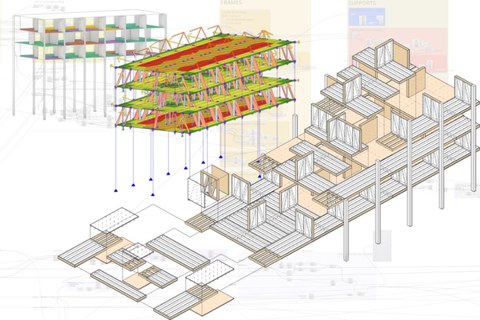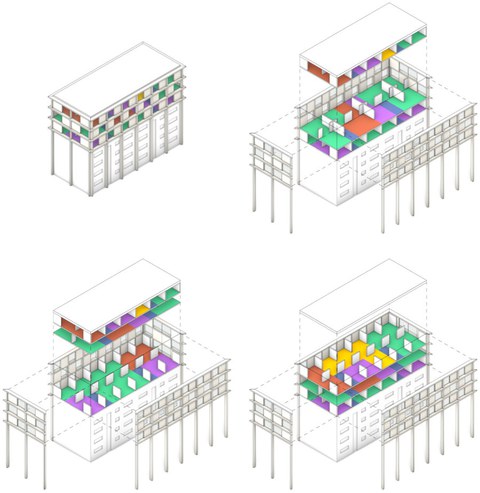Digital-parametric Planning Processes for Resource-Efficient Densification in Timber Construction
Extending existing urban buildings with sustainable and cost-effective systems is one of the central challenges in many cities. Addressing this task through digital process chains and innovative structural systems made of timber is the focus of the research project at the Chair of Structural Design at TU Dresden.
The goal of the project, "Digital-parametric Planning Processes for Resource-Efficient Densification in Timber Construction," is to develop spatially interlocked timber superstructures for vertical extensions of existing buildings. The way to achieve this is through creating a parametrized script that, as an output, proposes an adaptive spatial structural system that reacts to different requirements and constraints of the existing buildings. By using a fully parametrized planning approach, the additional loads are transferred to clearly defined support points along the perimeter of the structure. This is achieved by load bearing connection of the timber-frame wall- and ceiling elements. The spatial structures are intended to be created across multipe storeys, depending on different space programs. The inner rib structure of the elements should be optimized for the flow of forces.
The project aims to create an integrative, modular system. The research intends to explore new ways for ecologically, economically, and architecturally convincing urban densification. The parametric planning method developed within the project is expected to simplify the planning of sophisticated housing variants for various building extension projects.
The research project aims to provide evidence for the following points:
- Resource-efficient densification concept based on timber construction
- Universal planning approach that reacts to different conditions and planning requirements due to its parametric nature
- Optimized force flow through a very high utilization of timber as a material
- Variance in the generated spatial configuration due to the spatial load-bearing effect
- Avoidance of "load distribution layers" on top of the existing building made of CO2-intensive materials such as reinforced concrete or steel
- Further development of the digital process chain from preliminary design to production, ensuring fast and cost-effective planning and production with minimal waste
- Reversibility and reuse of timber elements.


